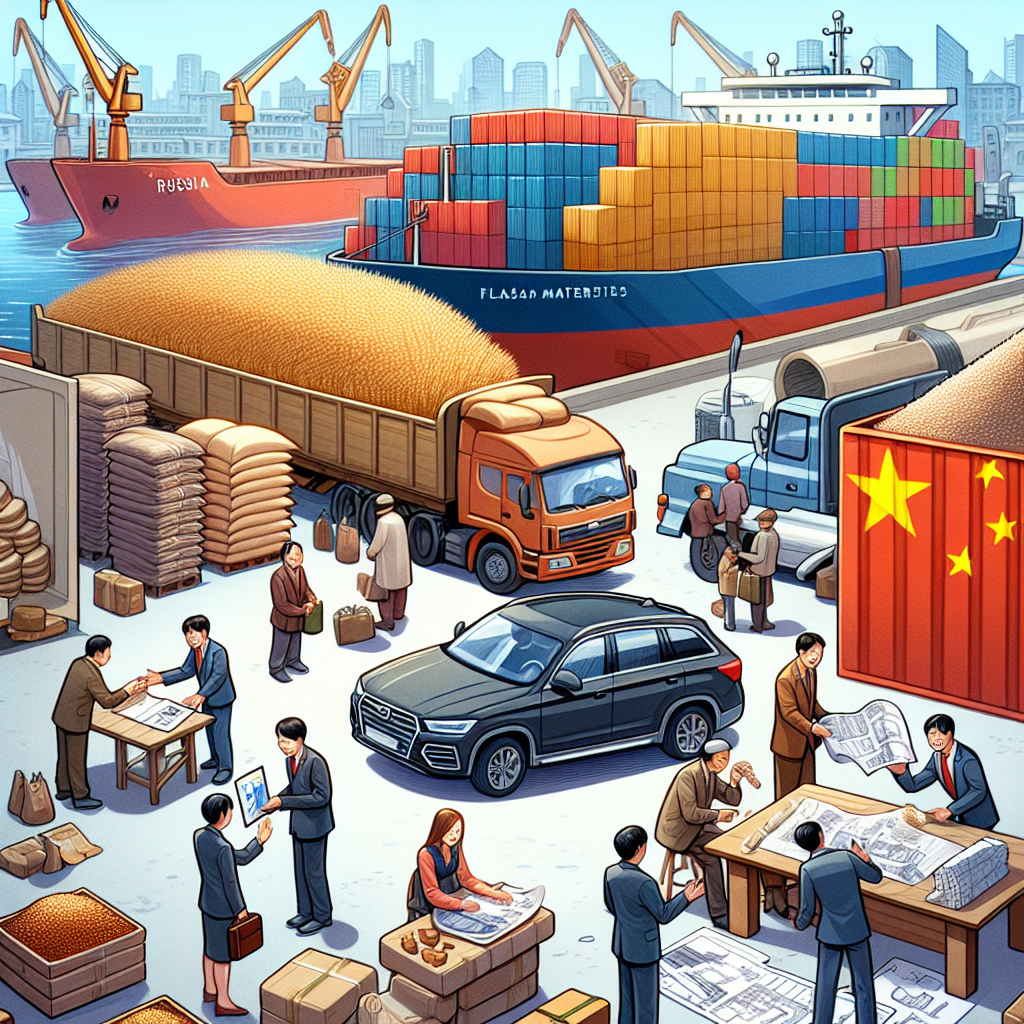In order to evade the harsh sanctions imposed by the West, the barter trade model of the 1990s has seen a resurgence in trade between Russia and China. Russia has been trading wheat for Chinese cars, flaxseeds for construction materials, and raw materials for services.
According to reports from Reuters, since Russia annexed Crimea in 2014 and the outbreak of the Russia-Ukraine war in 2022, the United States, Europe, and their allies have imposed over 25,000 sanctions on Russia in an attempt to cripple its $2.2 trillion economy and weaken the support for President Putin.
Last year, Washington warned Chinese banks against supporting Russia’s war efforts. The Trump administration also imposed tariffs on India for its oil trade with Russia.
“Chinese banks are not accepting Russian payments for fear of being listed in the secondary sanction list,” a source from the payment market told Reuters.
Therefore, the barter trade model known as “countertrade,” popular during the 1990s shortage era, has resurfaced in Sino-Russian trade.
Last month, Reuters reported that China’s Hainan Longpan Oilfield Technology Co. was seeking to exchange steel and aluminum alloys for marine engines.
Recently, Reuters learned from two trade sources that in one transaction, the Chinese side used cars to acquire Russian wheat. In this deal, the Chinese requested payment in grain from Russia.
In the specific trade process, the Chinese partners purchased cars in China with Renminbi, while the Russian partners bought grain with rubles. Finally, the wheat and cars were exchanged between the two parties.
Additionally, customs data shows two other transactions where linseeds were traded for home appliances and building materials from China. It is estimated by Russian foreign trade experts that one linseed transaction was registered by the Ural Customs Department in Russia in 2024, valued at around $100,000.
In other confirmed transactions, Russia delivered metals to China in exchange for machinery equipment, while China traded services for Russian raw materials.
Due to the opacity of barter trade, the total value of such transactions between China and Russia is difficult to estimate. However, analysts point out discrepancies in foreign trade data between the Bank of Russia and customs, which may indirectly reflect the scale of such off-the-book deals. This discrepancy amounted to $7 billion in the first half of this year.
In 2024, the Russian Ministry of Economic Development issued a 14-page guide on “foreign countertrade transactions” to provide local businesses with suggestions on how to avoid Western sanctions through such transactions. Russia even proposed setting up a dedicated trading platform for countertrade.
The Sino-Russian barter trade model stems from the post-Soviet era of the 1990s, where countertrade involved a variety of goods ranging from electricity, oil, flour, sugar to boots. At that time, due to cash shortages, severe inflation, and rapid devaluation of the Russian currency, countertrade became attractive but also led to issues like price fraud. Today, with ample funds, the driving factor of countertrade has shifted to the sanctions pressure on Sino-Russian trade by the West.
Russia has deemed Western sanctions illegal, while China criticizes the discriminatory nature of these sanctions.
When asked for comment, the Russian Federal Customs Service confirmed engaging in barter trade with various countries involving a “wide range of goods.” However, the agency also stated that the volume of barter trade is negligible compared to overall foreign trade contracts.
Maxim Spassky, Secretary-General of the Russian-Asian Business Alliance, stated that the growth of barter trade is a symptom of “de-dollarization, sanctions pressure, and liquidity issues with partners.” The trade volume is expected to increase further.
The secretive trade exchange of barter between China and Russia to evade Western sanctions has never been reported before due to the difficulty of tracking.
Reuters notes that signs indicate increasing economic pressure on Russia. The Russian Central Bank currently shows that the economy is technically in recession and inflation remains high.
US President Trump earlier stated that after failed peace negotiation efforts with Russian President Putin to end the war, he is ready to enter the second phase of imposing sanctions on Russia in coordination with the EU – expanding secondary sanctions on countries purchasing Russian energy.
NATO Secretary-General Mark Rutte warned on Tuesday that countries like Brazil, China, and India engaging in trade with Russia may face severe repercussions from US secondary sanctions. He made this statement during a meeting with US Senators.

